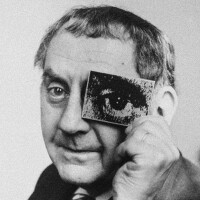About Surrealism
What is Surrealism?
Beginning in the 1920s, the international movement of painting, sculpture, theater, music, literature, film, and photography known as Surrealism sought to free humanity from traditional, constricting forces in order to reengage with the deeper self that conventional society had long suppressed. At the core of the surrealist movement, spearheaded by writer and theorist André Breton, was a sustained sense of revolt against the expected conventions of artistic practice. Breton and the artists who followed him turned to Freudian psychoanalytic theory as a means of engaging with the subconscious through the acts of painting or writing. Automatism, which allowed for the action of drawing or composing to be guided by the subconscious mind, provided means of accessing the latent content of dreams through artistic production, parallel to psychoanalysis. This interest in the collective or individual subconscious was in many ways a result of the alienation from and disillusionment with humanity following the end of World War I. Surrealism privileged the artistic mind as the source of both critique of and solution to political and artistic questions of the period.
Artists have continued to experiment with the questions and imagery of Surrealism throughout the late twentieth and early twenty first centuries.
Surrealism Characteristics & Style
Little unites the Surrealist group aesthetically; however, many of the key artists had similar intellectual approaches and techniques. Many Surrealists such as Magritte or Dali developed a naturalistic tendency within Surrealism, presenting clear, recognizable scenes and objects that seem to have been manipulated or metamorphosed into an impossible dream or nightmare image. These paintings use juxtaposition or surprising shifts in scale to question the nature of reality, perception, and language in absurdist scenes. Other Surrealists such as Masson or Miro turned to the Dada device of allowing chance to inform an artwork more than the hand of the artist. The process of automatic drawing or painting, the creation of art without conscious control, lent itself to biomorphic surrealism, a significant development toward abstraction. The spontaneous, intuitive nature of biomorphic surrealism allowed the artist to enter the painting – as Breton put it – towards the object, not away from it, resulting in abstract images that hint at living forms.
Surrealism in the Americas

The international dissemination of European Surrealism was amplified by the need for artists to escape fascism leading to and during World War II. Abstraction in the United States was pulled toward Surrealism by American artists such as Dorothea Tanning, Joseph Cornell, Alexander Calder, who turned to Surrealism as a means of exploring identity or commenting on the drastically changing face of American society. Frida Kahlo is among the best known Mexican Surrealists; she organically came to the experimentation with symbolism and mythology as a means of grappling with her personal trauma as well as her identity as the daughter of a German expatriate father and Mexican mother within a colonial context. Peruvian artist César Moro experimented with collage, weaving together image and text within a clear Surrealist aesthetic. Artists all over the Americas have utilized the symbolism and abstraction of Surrealism to repudiate the dominance of European artistic convention and establish their own voices and artistic identities.
The Impact and Legacy of Surrealism
Surrealism indelibly directed the modernist project toward avant-garde investigations of the human psyche through impossible, frightening, and erotic worlds. These explorations and purposeful disturbances were sustained through the development of American abstraction following World War II. Because Surrealism elevated the profile of Freudian theory through visual means, artists of later generations sustained such engagement with the notions of psychology and analysis. Abstract Expressionist artists including Jackson Pollock experimented with automatism throughout his development of gestural abstraction. In literature, the Beat Generation was enormously influenced by Surrealist writing, as were Magical Realists, and key figures of the postmodern literary world.
Although Surrealism had a particular development between the World Wars, it was not a book-ended movement in an isolated period. Artists have continued to experiment with the questions and imagery of Surrealism throughout the late twentieth and early twenty first centuries. Magritte’s Treachery of Images was the basis for Michel Foucault’s exploration of semiotics and representation. Surrealist painting and sculpture occupies major museums around the world including the Museum of Modern Art, the Centre Pompidou, the Whitney Museum, the Metropolitan Museum, and many other institutions.
Timeline & History of Surrealism
Artists
Who Are the Surrealists?
Although Breton was the clear leader of Parisian Surrealism, the movement developed simultaneously in Belgium, Spain, Germany, the Netherlands, Mexico, and the United States. It was also wide ranging in terms of media, with many artists turning to the new modes of visual construction of photography and film to experiment with the ambiguous nature of imagery.
Surrealist Artists
Surrealists at Auction
Sell
Have Something to Sell?
Have Something to Sell?
Get Started





























